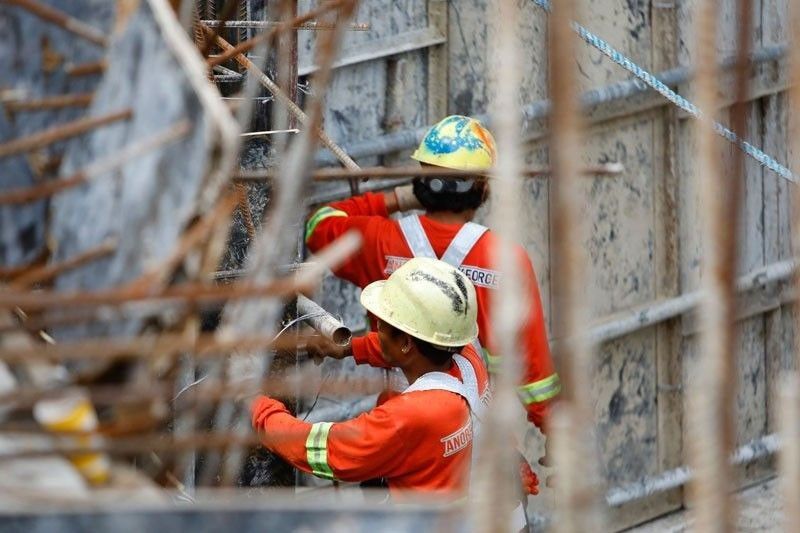
Upgrade to High-Speed Internet for only ₱1499/month!
Enjoy up to 100 Mbps fiber broadband, perfect for browsing, streaming, and gaming.
Visit Suniway.ph to learn
MANILA, Philippines — The government’s sale of subsidized rice at P20 per kilo contributed to the increase in the country’s demand for the staple in the previous market year, an international agency said.
The US Department of Agriculture-Foreign Agricultural Service in Manila (USDA-FAS Manila) revised upward its rice consumption estimate for the Philippines in market year 2024-2025 by 0.6 percent to 17.3 million metric tons (MT) because of the subsidized rice sale.
The rice market year for the Philippines starts in June and ends in July of the following year.
On an annual basis, the estimated rice consumption in market year 2024-2025 was four percent higher than the 16.6 million MT recorded volume in market year 2023-2024, according to USDA-FAS Manila.
For the current market year 2025-2026, the USDA-FAS Manila kept its rice consumption forecast at 17.3 million MT since there is no foreseen measurable shift toward other carbohydrate sources like bread or pasta.
“The demand is still primarily driven by the increase in population, growing income levels of households and moderating rice inflation due to the softening of global rice prices,” the USDA-FAS Manila said.
The Department of Agriculture (DA)’s sale of the P20 per kilo rice, which began in May, also contributed to higher production in market year 2024-2025.
“Continued support from the government for the rice industry and the sale of subsidized milled rice supports the estimated increase in rice production,” the USDA-FAS Manila said.
The USDA-FAS Manila estimated that milled rice output in market year 2024-2025 reached 12.2 million MT, 1.67 percent higher than the 12 million MT projected by its mother agency USDA.
For the current market year, rice production may hit 12.25 million MT, according to USDA-FAS Manila.
The DA sells aging NFA rice stocks at P20 per kilo by subsidizing the difference between the set price and the grains agency’s selling price of P33 per kilo.
The government plans to sustain the subsidized rice sale until the end of Marcos administration in 2028, covering up to 15 million households nationwide or about 60 million Filipinos.
From May 13 to June 23, the DA sold 542.18 MT of rice under its P20 program, generating sales of around P10.83 million.
The program has benefitted 63,473 households, according to the DA.
Meanwhile, the P20 rice program for minimum wage earners has sold 138.9 MT worth P2.78 million, based on DA data.
About 11,334 households have benefitted from the program.
High-zinc rice
Around 35,000 Filipino households by 2028 will have access to a rice variety that seeks to address zinc deficiency in the country, according to the Philippine Rice Research Institute.
PhilRice, an attached agency of the DA, plans to reach around 35,000 households with high-zinc rice in three years following the first harvest of the crop recently in its station in Negros Occidental.
The PhilRice Negros station harvested two zinc-rich varieties, namely NSIC Rc 460 and NSIC Rc 648, both of which are aimed at reducing zinc deficiency, one of the leading contributors to stunting among Filipino children.
“With Nutrition Month putting the spotlight on healthy food, our high-zinc rice shows that the solution to hidden hunger can begin right at our dining table,” said Ommal Abdulkadil, PhilRice Negros station director.
Citing government data, PhilRice said about 26.7 percent of Filipino children under five are stunted, a condition linked to inadequate intake of key micronutrients like zinc.
One cup or 150 grams of cooked NSIC Rc 460 or Rc 648 rice per day may provide up to 25 percent of preschoolers’ daily zinc requirement, said B.P. Mallikarjuna Swamy, lead breeder from the International Rice Research Institute.
The NSIC Rc 460 contains 19.6 milligrams of zinc per kilo while NSIC Rc 648 contains 20.4 milligrams of zinc per kilo, according to PhilRice.
PhilRice said it plans to make the zinc-rich rice varieties more accessible to priority areas identified under the Philippine Plan of Action for Nutrition. These areas, which have the highest prevalence of stunted children, include Pangasinan, Quezon, Sorsogon, Iloilo, Surigao del Sur and Maguindanao.

 13 hours ago
2
13 hours ago
2



